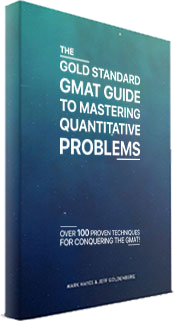
Critical reasoning Complete Argument v1.3
You will encounter many different question types during the GMAT and each will require you to approach them in a unique way. However, for today, I am going to focus on a specific question type found in the verbal section known as a “Complete the Argument” question.
The good news is that these questions tend to be fairly easy to identify. In most cases, the question will include the phrase “which of the following most logically completes the argument?” Within this question type there are three major categories.
Corroborating Evidence Questions
These questions ask you to identify information that either supports or strengthens the claim stated in the question. Corroborating evidence questions usually contain the words “since” or “because” in their final sentence.
Assumption Questions
This type of question will require you to check the validity of the claim with another piece of information given in the answers. Typically these questions will end with the phrase “assuming that…”
Prediction Questions
Prediction questions ask you to take the information given to you in the question and form a prediction about the outcome. These questions often end with a phrase similar to “it should be expected that…”
Complete the Argument Game Plan
Despite the different categories of complete the argument questions, the methods you use to approach them is actually fairly similar. The first step it to closely analyze the question’s argument, evidence, and conclusion. Once you are certain that you know what claim the question is making, attempt to form a prediction based on the evidence. I know this may sound a little backwards as only one category specifically asks for you to predict, but trust me. Trying to form a prediction will help you get your mind in the right place and will put the necessary evidence in order. Know that predictions will be more difficult for some categories than others. Questions in the prediction category should be fairly straightforward as making a prediction is what the question is designed to have you do, but questions in the assumption category may be more difficult. However, you can typically “predict” assumption questions by looking at what criteria need to be met in order to make the claim true. Corroborating evidence questions are the most difficult questions to predict for as they are not really set up for this kind of answer. Instead of directly predicting an outcome, try to think about what types of information would significantly strengthen or weaken the claim.
The next step is to eliminate any wrong answers you can identify. Incorrect answers for this type of question usually fall into one of three different camps. The first are answers which are very broad and not precise. Quite often, you can talk yourself into believing these answers as they are broad enough where there may be certain specific situations where they could be true. However, if an answer seems too vague to be correct in all cases, it is probably not your best option. Off topic answers should also be removed and are generally fairly easy to identify. For example, if the claim asks about the height of three men and you see an answer which starts talking about their age, move on. The last common type of wrong answers are ones which support an argument opposite to the question’s claim. To avoid this trap it is crucial to understand what specific claim the question is making.
For many, complete the argument questions are a stumbling block. They can be complicated questions and it is important to read them very closely because they will try to trick you. Do you have trouble with this type of question? If you have any tips to help your fellow GMAT testers out, please share them in the comments section.

